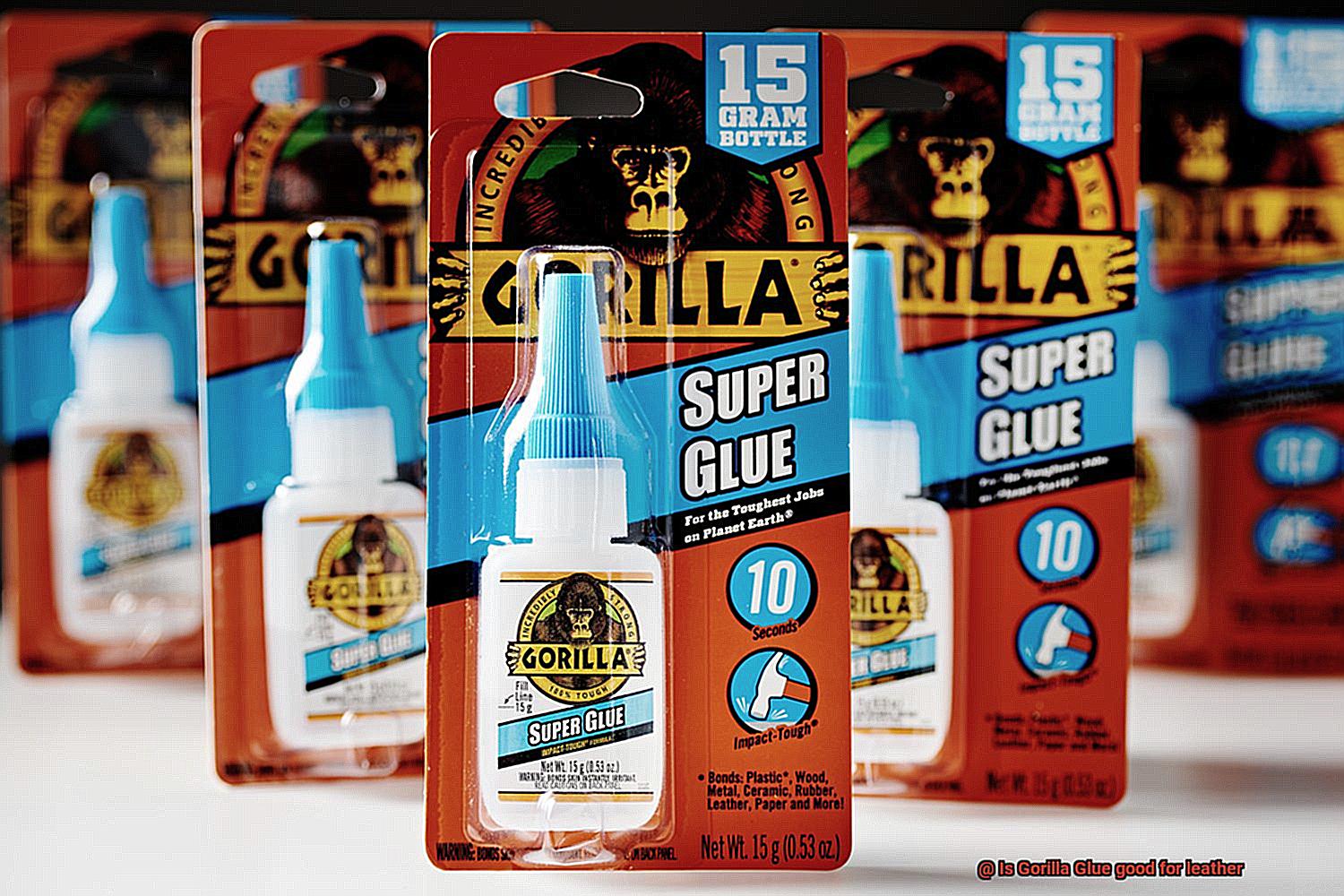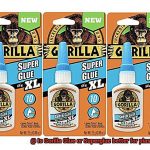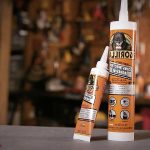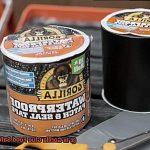Today, we’re tackling a burning question that’s been on the minds of both DIY enthusiasts and leather industry pros: Is Gorilla Glue good for leather? Leather can be a tricky material to work with, but fear not.
We’re here to uncover the truth about Gorilla Glue and its effectiveness on this beloved material. So, grab a comfy seat, because we’re about to dive deep into the world of leather and glue.
Let’s get started.
What is Gorilla Glue?
Contents
- 1 What is Gorilla Glue?
- 2 What is Leather?
- 3 Is Gorilla Glue Suitable for Leather?
- 4 Advantages and Disadvantages of Using Gorilla Glue on Leather
- 5 Special Considerations When Working with Leather
- 6 The Best Type of Glues to Use on Leather
- 7 Preparing the Leather Surface for Bonding
- 8 Testing the Adhesive Before Applying it to the Entire Surface
- 9 Conclusion
In the vast realm of adhesives, one brand reigns supreme with its exceptional strength and adaptability – Gorilla Glue. Whether you’re a seasoned craftsman or a DIY enthusiast, this adhesive is your steadfast companion for all your bonding needs. Step into the fascinating world of Gorilla Glue as we explore its unique features, applications, and essential considerations when working with delicate leather.
Unleashing Herculean Strength:
Gorilla Glue’s secret weapon lies within its polyurethane-based formula, meticulously crafted to forge an unbreakable bond between diverse materials. From the sturdy embrace of wood and metal to the union of stone and ceramic, Gorilla Glue seamlessly unites various surfaces, ensuring a steadfast hold that endures. Its waterproof nature makes it a reliable ally for both indoor and outdoor projects, guaranteeing that your creations withstand the test of time.
Versatility at Its Finest:
The beauty of Gorilla Glue lies in its chameleon-like ability to adapt to any project. Take your pick from liquid glue, glue sticks, or super glue forms – the freedom is yours. Whether you’re constructing furniture, embarking on woodworking marvels, or indulging in artistic crafts, Gorilla Glue has got your back.
The Mighty Gorilla Grip:
When it comes to strength, Gorilla Glue takes center stage as an unrivaled titan. Renowned as one of the most robust glues on the market, it boasts an awe-inspiring holding power that ensures your bonds remain unyielding. As this adhesive dries, it expands with gusto, filling gaps and bestowing a foam-like texture that fortifies durability. This fantastic expansion feature empowers Gorilla Glue to triumph over even the most formidable tasks with remarkable ease.
Essential Considerations for Leather:
While Gorilla Glue proves its mettle with countless materials, caution must be exercised when using it on delicate leather. Leather, a fabric that demands reverence, requires special care. Gorilla Glue’s chemical composition may react with the tannins in leather, leading to potential discoloration and deterioration over time. Furthermore, its expansion and foaming properties have the potential to create uneven surfaces or distortions on this cherished material.
Leather Bonding Done Right:
To ensure a triumphant union with leather, it is imperative to select adhesives expertly tailored for this noble material. These specialized glues provide an unwavering bond without compromising the integrity or aesthetic of the leather. Proper surface preparation, such as meticulous cleaning and gentle roughening, plays a pivotal role in achieving optimal results.
What is Leather?
Leather, a material steeped in history and revered for its durability, opulence, and undeniable allure, has captivated mankind for centuries. But what exactly is leather, and how does it transform from raw animal hides into the luxurious material that adorns our lives? Join us on this fascinating journey as we delve into the secrets of leather, exploring its origins, production process, and unique properties that have made it a favorite among fashion connoisseurs and artisans alike.
The Essence of Leather:
- Leather is derived from the hide or skin of animals, such as cattle, sheep, goats, pigs, and even exotic reptiles like snakes and alligators.
- The outermost layer, known as the grain, delivers strength and resistance to wear.
- The middle layer, called the dermis, boasts collagen fibers that imbue leather with strength and flexibility.
- The innermost layer, known as the hypodermis, provides insulation and cushioning.
The Artistry of Tanning:
- Tanning is the pivotal process that transforms raw hides into exquisite leather.
- Various tanning methods are employed, including chrome tanning (using chromium salts), vegetable tanning (utilizing plant-based materials), and aldehyde tanning (employing formaldehyde-based chemicals).
- Tanning not only preserves the hides but also prevents decomposition while enhancing their longevity.
Elevating Quality and Aesthetics:
- After tanning, leather undergoes further refinement to elevate its quality and aesthetic appeal.
- Dyeing allows for an expansive palette of colors to be achieved, adding vibrancy and personalization.
- Different finishes such as aniline (transparent dyes), semi-aniline (partially opaque dyes), or pigmented finishes (opaque colors) lend protection against stains and fading, while also enhancing the leather’s visual allure.

The Tapestry of Leather Types:
- Leather can be classified based on factors like the animal source, thickness, texture, and finish.
- Full-grain leather, with its natural grain intact, is considered the pinnacle of quality.
- Top-grain leather undergoes sanding and finishing to remove imperfections.
- Corrected-grain leather features an artificial grain applied for a polished look, while suede showcases a velvety texture that’s soft to the touch.
The Irresistible Qualities of Leather:
- Leather boasts exceptional durability, resisting tearing, stretching, and punctures with ease.
- Its inherent breathability ensures adequate air circulation, promoting comfort in clothing and upholstery.
- With its natural insulating properties, leather provides warmth during colder seasons while remaining cool in hotter climates.
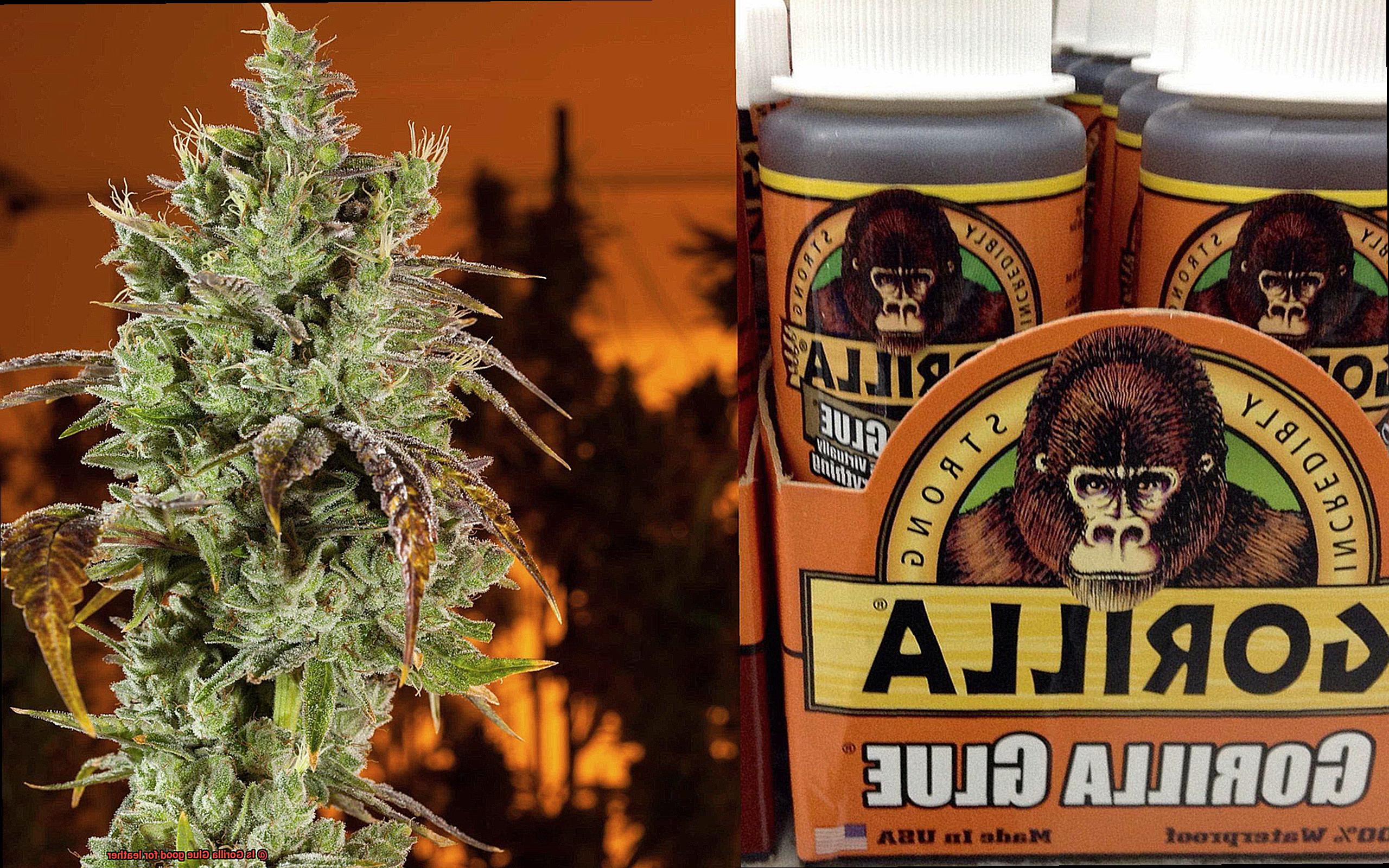
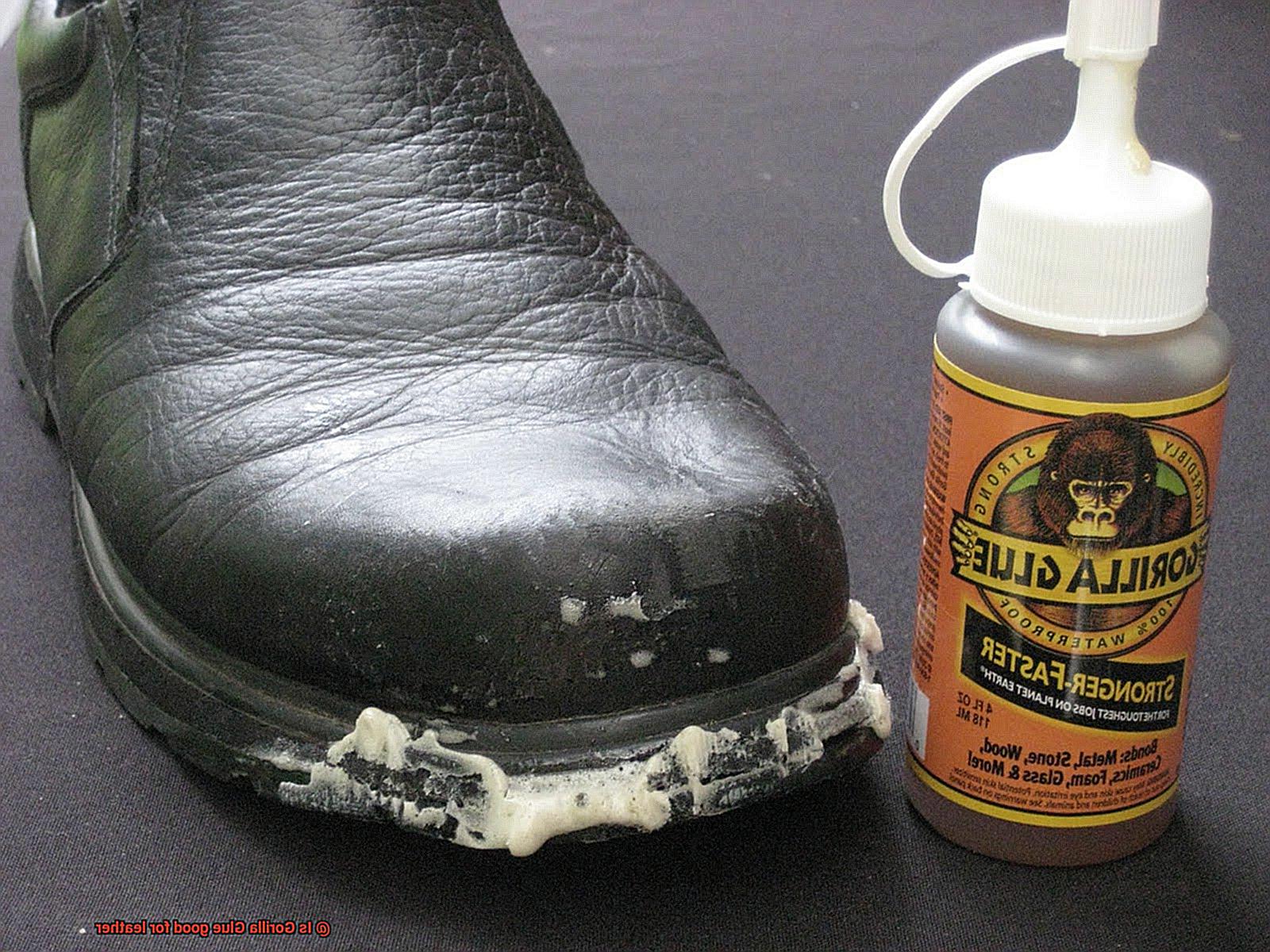
Is Gorilla Glue Suitable for Leather?
When it comes to bonding leather, it’s crucial to choose the right adhesive that won’t compromise its delicate properties. While Gorilla Glue is a popular choice for many projects, it may not be the best option for leather.
Leather requires a specialized adhesive that is specifically formulated to bond its porous surface without causing any damage or discoloration. Gorilla Glue, on the other hand, is primarily designed for porous surfaces like wood, stone, and fabric. Its strong adhesive properties can leave behind unsightly residue or stain the leather surface, detracting from its aesthetic appeal.
Another downside of Gorilla Glue when used on leather is its tendency to expand as it dries. This expansion can distort or misalign the leather pieces being bonded, posing a significant risk when working with intricate designs or delicate items.
Fortunately, there are dedicated leather adhesives available in the market that address these concerns. These specialized glues have a flexible formula that allows the leather to maintain its natural properties and flexibility while providing a secure bond.
To summarize:
- Gorilla Glue is not specifically formulated for leather bonding.
- It can leave behind residue or stain the leather surface.
- The expansion during drying can distort or misalign leather pieces.
- Specialized leather adhesives are available in the market.
- These glues maintain the integrity and beauty of leather while providing a strong bond.
Advantages and Disadvantages of Using Gorilla Glue on Leather
When it comes to bonding leather, choosing the right adhesive is crucial. While Gorilla Glue may be a popular choice for many materials, using it on leather can have its drawbacks. In this article, we will explore both the advantages and disadvantages of using Gorilla Glue on leather, allowing you to make an informed decision for your leather projects.
Advantages of Using Gorilla Glue on Leather:
- Strong Bond: Gorilla Glue is renowned for its exceptional adhesive properties, providing a strong bond between different materials, including leather. It can securely hold together torn leather items or attach new components to leather, ensuring a durable and long-lasting bond.
- Versatility: Gorilla Glue is a versatile adhesive that can bond various types of leather, making it suitable for a wide range of leather applications. Whether you’re repairing shoes, handbags, belts, or creating new leather items, Gorilla Glue can handle the task.
- Water-Resistance: Once cured, Gorilla Glue forms a water-resistant barrier that protects the bonded area from moisture or water exposure. This feature is particularly beneficial for leather items that are likely to come into contact with water or need to withstand humid conditions.
Disadvantages of Using Gorilla Glue on Leather:
- Appearance Concerns: One significant drawback of using Gorilla Glue on leather is its potential impact on the material’s appearance. The glue expands as it cures, leading to foaming or bubbling if excess glue is used or if it spreads beyond the desired area. This can result in an uneven or messy appearance on the leather surface.
- Stiffness: The strength of Gorilla Glue can also lead to stiffness in the bonded area when applied to leather. The glue hardens and creates a rigid texture that may affect the flexibility and natural drape of the material. This can be problematic for leather items that require flexibility, such as gloves or garments.
- Difficult to Reverse: Once Gorilla Glue is applied and cured, it forms a strong bond that can be challenging to reverse or remove. This can be a disadvantage if you make a mistake during the bonding process or if you need to disassemble the leather item in the future. Removing Gorilla Glue from leather may require additional tools or techniques, which can potentially damage the leather surface.
- Potential Toxicity: Gorilla Glue contains chemical components that may emit fumes during the curing process. These fumes can be harmful if inhaled, so it is essential to use Gorilla Glue in a well-ventilated area. Additionally, direct skin contact with the glue should be avoided to prevent potential skin irritation or allergic reactions.
Special Considerations When Working with Leather
Working with leather is a captivating endeavor that allows for the creation of sophisticated and rugged projects. From wallets and handbags to shoes and furniture, the possibilities are endless. However, leather also presents unique challenges and requires special considerations to achieve optimal results.
One of the most critical aspects to bear in mind when working with leather is the type of glue you use. You might think glue is a trivial matter, but let me assure you, my friend, it’s more important than meets the eye. Choosing the wrong adhesive can lead to disastrous outcomes. Imagine spending hours meticulously crafting a beautiful leather bag, only to have it fall apart because of improper adhesive selection. Trust me, that’s a nightmare you want to avoid.
So, what should you consider when it comes to glue and leather? First and foremost, compatibility is key. Leather is a natural material that demands flexible adhesives to maintain its suppleness. While Gorilla Glue may be excellent for bonding other materials, it tends to dry hard and rigid, compromising the integrity of the leather over time. Instead, opt for specialized leather glues or adhesives designed specifically for this magical material.
However, before you start slathering on glue haphazardly, conduct a test on scrap pieces of leather first. This will help determine if the glue is compatible with your specific type of leather and achieves the desired results. Apply a small amount of glue on the scrap piece and let it dry. Check for any discoloration, stiffness, or damage to the leather. If everything looks good, then you’re good to go.
When it comes to applying the glue, remember that less is more. Apply it evenly and sparingly to prevent excess adhesive from seeping through the pores of the leather or leaving visible marks. And don’t forget—patience is a virtue. Allow the glue to cure properly according to the manufacturer’s instructions before subjecting the leather to stress or strain. Rushing the drying process can weaken the bond strength and potentially damage the leather.
Before applying any glue, ensure that the surface of the leather is adequately prepared. Thoroughly clean it to remove dirt, oils, or residue that may hinder proper bonding. But be gentle. Use a mild leather cleaner or a damp cloth to wipe away any impurities, avoiding harsh chemicals or abrasive cleaners that can harm the leather. Once cleaned, let the leather dry completely before applying any glue.
Now, let’s talk about heat. Leather despises it. Excessive heat can cause leather to shrink, warp, or become brittle. So, when working with glue, avoid exposing the leather to high temperatures. Keep your work area cool and exercise caution with heating tools or equipment like hot glue guns. Maintain a safe distance from the leather to prevent mishaps.
The Best Type of Glues to Use on Leather
Leather, a material as unique as it is beautiful, deserves an adhesive that can uphold its distinctive qualities. When it comes to gluing leather, the wrong choice can spell disaster, leaving your creation unraveling like a poorly executed magic trick. Fear not, fellow leather enthusiasts. Let’s delve into the best types of glues for your leather projects.
First and foremost, we have the mighty contact cement. This adhesive reigns supreme in the world of leather bonding. Known for its formidable strength and unparalleled flexibility, contact cement is a match made in heaven for all your leather needs. Simply coat both surfaces, allow them to dry, and then press them together for a bond that is not only durable but also long-lasting.
If you find yourself embarking on a heavy-duty leather project that demands utmost staying power, look no further than epoxy adhesive. This glue is a force to be reckoned with, capable of bonding various materials together with ease. However, bear in mind that working with epoxy can be more challenging and may require finesse and experience to achieve optimal results.
For those moments when your leather item requires some tender loving care or an urgent fix, super glue or cyanoacrylate adhesive is your trusty sidekick. With lightning-fast bonding capabilities and unwavering security, it is perfect for those “oops” moments. Do keep in mind that for larger or more demanding applications, super glue may not be as effective.
Now, here’s a pro tip: steer clear of using glues such as white glue or wood glue on leather. They simply lack the flexibility and strength necessary for leather projects and may leave behind unsightly residue or stains on your precious masterpiece.
Always remember to test any adhesive on a small, inconspicuous area of your leather before fully committing to your project. This ensures that the glue won’t mar or discolor your beloved leather.
Preparing the Leather Surface for Bonding
Preparing the leather surface for bonding is a crucial step in achieving a strong and durable bond that will stand the test of time. To ensure optimal results, follow these expert tips:
- Cleanliness is key: Begin by gently wiping the leather surface with a clean cloth dampened with warm water to remove any dirt or dust particles. Avoid using excessive water, as it can saturate the leather and cause damage.
- Gentle spa treatment: Use a mild soap or leather cleaner specially formulated for delicate materials. Apply a small amount of the cleaner onto a clean cloth and gently rub it onto the leather in circular motions. Be cautious not to scrub too hard, as this can lead to abrasion or discoloration.
- Rinse off residue: After cleaning, wipe the leather with a damp cloth to rinse off any soap residue. It is essential to remove all traces of the cleaner to prevent interference with the bonding process.
- Create a textured finish: To enhance the adhesive bond, consider lightly roughening up the leather surface. Use fine-grit sandpaper or a sanding block to gently sand the surface in one direction. This will create a slightly textured finish that improves adhesion for the glue.
- Patch test for compatibility: Before applying any glue, perform a patch test on a small inconspicuous area of the leather. Apply a small amount of Gorilla Glue or your chosen adhesive and allow it to dry completely before evaluating for any damage or discoloration.
Testing the Adhesive Before Applying it to the Entire Surface
Bonding leather requires careful consideration of the adhesive used. Gorilla Glue, a renowned adhesive known for its strength and versatility, is a popular choice. However, before committing to applying it on your leather surface, conducting a small test is crucial. This ensures that the adhesive will not cause any harm or discoloration to your valuable leather.
Why Test Gorilla Glue on a Small Area?
Leather possesses unique properties, finishes, and chemical compositions. Not all adhesives are compatible with every type of leather. By testing Gorilla Glue on a discreet area, you can assess its compatibility with your specific leather item before proceeding. Here’s why this step is vital:
- Preventing Damage: Some adhesives can be detrimental to leather, causing discoloration, texture changes, or even physical harm. Testing Gorilla Glue on an inconspicuous area minimizes the risk of ruining your entire leather item.
- Assessing Compatibility: Different leathers require different bonding techniques and adhesives. By testing Gorilla Glue, you can determine if it suits your leather’s properties and finish.
How to Conduct the Adhesive Test:
To perform the adhesive test correctly, follow these steps:
- Choose an inconspicuous test area: Select a hidden or less visible part of your leather item, such as the backside of a strap or an inner lining.
- Apply a small amount of Gorilla Glue: Follow the manufacturer’s instructions for applying and curing the glue.
- Allow drying time: Give the glue sufficient time to dry completely based on the recommended curing time provided by the manufacturer.
- Inspect the test area: After the glue has dried, closely examine the test area for any adverse effects. Look for discoloration, changes in texture or stiffness, and any other damage caused by the adhesive.
Next Steps:
If there are no visible signs of damage or discoloration, it indicates that Gorilla Glue is compatible with your leather item. However, exercise caution and continue monitoring the test area over time.
In case undesirable effects occur, such as discoloration or damage to the leather, it is best not to use Gorilla Glue on that specific type of leather. Instead, explore alternative adhesives formulated for bonding leather materials.
Also Read: Gorilla Glue – Glue Things
Conclusion
After careful consideration and analysis, it is clear that Gorilla Glue is not suitable for use on leather.
While it may be a strong adhesive for other materials, leather requires a specific type of glue that is designed to bond with its unique properties. Using Gorilla Glue on leather can result in damage, discoloration, and an overall compromised appearance.
So, when it comes to repairing or working with leather, it’s best to steer clear of Gorilla Glue and opt for a product specifically made for this purpose.

